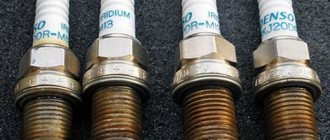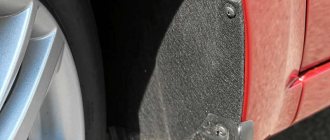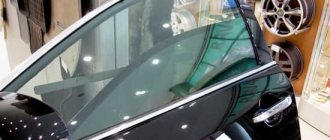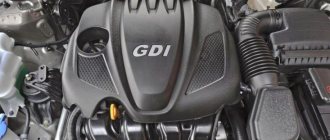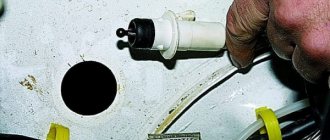- 1. Is it necessary to change the color if the car is covered with film? 1.1. What if less than 30 or 50%?
- 1.2. If the car became multi-colored?
- 3.1. Do I need to show the car?
- 4.1. Is it possible to avoid responsibility?
Wrapping a car with film does not actually change the color. After all, the main body color remains intact. But does the 2022 legislation formally require a color change? We provide complete, current and reliable information with reference to official laws in this article. We will also tell you in what cases re-registration with the traffic police is not required, how much it all costs, including through State Services, and what will happen for violating the obligation to make changes to the registration data of the vehicle.
Why do you need a film for a car?
Auto films are often used for the following purposes:
- protection of the body from cuts, scratches, dents and other damage;
- transformation of appearance;
- advertising on cars;
- glass painting;
- reducing vehicle heating and protecting the driver’s eyes (athermal films);
- hide numbers from traffic police cameras (nanofilm), etc.
Depending on what goal the car owner is pursuing, he must choose one or another of his material options.
Criteria for choosing auto film
To choose the best film for your vehicle, you must first decide on the purpose, the desired result, and the final budget. To do this, a number of important factors should be taken into account:
- texture;
- design;
- surface type;
- thickness;
- elasticity;
- strength;
- quality of the adhesive layer;
- dimensions (width) - the number of joints depends on this;
- declared service life;
- price;
- manufacturer.
It is also advisable to clarify what technology was used to produce the vinyl film for cars, read reviews from customers who have already used products of this type and brand. At the same time, it is better to do this not on the websites of online stores and manufacturers, but on third-party resources.
Advantages of protective film for a car against chips
It is recommended to install a protective film on the car immediately after purchase, since a significant number of chips can be obtained after driving up to 500 km.
Timely protection of the car with film will ensure:
- Preservation of the body from precipitation, tree branches, crushed stone and gravel.
- Integrity of the bumper, headlights and other elements in minor accidents.
- Immunity to chemicals and ultraviolet radiation.
- Uniform burnout. Once the material is removed, you will not see any difference in color.
- Savings on investments. The value of a sold car with a film will be higher, since the original paint and appearance will be preserved, like a new car.
Polyurethane protective film has the above advantages; other coating options will not be able to provide protection comparable to polyurethane.
Price for pasting in the service
The cost of services depends on such factors as the quality of the material, the type of vehicle body, the area of the pasting, the complexity of the relief and pattern. For example, let’s compare the average prices for wrapping cars of different classes using film of the same type and manufacturer:
| Film type | Middle class car | Business Class | Minibuses and SUVs |
| Glossy KPMF | 650 $ | 700 $ | 750 $ |
Types of films
The choice of car films is quite large. In addition to its main protective function, the film can transform your car beyond recognition. And at the moment, car films boast an impressive palette of colors and textures.
Now let's introduce you to different types of films:
- Vinyl (can be colored and transparent, and also has various effects of shine, opacity, or even imitates any material).
- “Chameleon” (one of the unusual types of car film because it changes color depending on the viewing angle).
- Carbon (carbon film is most often used for tuning cars and consists of 3 or more layers).
- Infinity (original vinyl with a metallic layer that creates a mirror effect).
- Polyurethane (a fairly durable film designed exclusively to protect the body and paint).
Each of them is special in some way and performs its own unique function, so you need to clearly define the purpose for which you will cover the car with foil.
Which film is better to cover a car?
Today, there are two types of films for wrapping car bodies - vinyl and polyurethane. Vinyl-based film coverings are available in a variety of types and colors, which allows them to be used to transform the exterior design. Although they protect the paintwork of the body from exposure to ultraviolet radiation and minor damage, their protective properties are inferior to anti-gravel polyurethane films, which are only transparent and are used exclusively to protect the body.
Vinyl films are most often used for car tuning and styling, which is explained not only by their diversity, but also by their lower price.
Depending on the production method, such films come in two types:
- calendered;
- cast.
Vinyl films HEXIS
Cast films are of higher quality and more durable; they are available in a wider range of types and colors, but are somewhat more expensive than calendered films. Which film to choose for your car is up to everyone to decide for themselves. But, if you decide to wrap your car yourself, it is better to choose cast film, which is of higher quality and easier to work with. There are the following types of vinyl films (car vinyl):
- transparent and colored;
- matte and glossy;
- pearlescent and metallic effect films;
- graphic films intended for applying designs using digital printing methods;
- textured films, with a surface stylized to resemble various materials, which include carbon-look film coating;
- “chameleon” type films, the color of which changes under different viewing angles.
Vinyl film chameleon
The choice is really very large, and everything here depends on your taste, and on what effect you want to get by resorting to this kind of tuning. But, in any case, you need to buy film from well-known brands if you want it to easily fit on any body parts with complex surface topography and last as long as possible. The most popular and in demand in all countries of the world are the following brands:
- 3M Scotchprint (USA);
- KPMF (UK);
- Hexis (France);
- ORACAL (Germany).
To determine how much film will be needed for pasting, you need to know the area of all body elements to which it will be applied. It is quite difficult to make such exact measurements, therefore, to roughly calculate the need for material and its cost, they use data verified in practice.
For complete wrapping of a car body, which is recommended for use when using auto vinyl, the following film consumption is accepted, depending on the class of the car:
- compact B-class cars - from 18 to 21 sq. m;
- middle class cars (C-class) 23–24 m2;
- large family cars D-class 25–27 sq. m.;
- business class cars (E-class) - from 27 to 30 sq. m.;
- S-class sports coupe 30–34 m2;
- compact SUVs 25–30 sq. m;
- large SUVs 34–37 m2.
Vinyl film in rolls
It is best to buy car vinyl in rolls 1.52 m wide, so that when pasting large body elements, you do not have to make joints.
Types of materials for car body wraps
Automotive films differ in material, manufacturing method, cost, quality, appearance, and purpose.
Based on material
Films for car body wraps are made from two materials:
- polyurethane;
- vinyl (PVC).
They differ from each other in the level of paint protection, durability and price.
Automotive polyurethane film is used to protect the body from dents, cracks, and scratches. It is also called armor or anti-gravel. Compared to vinyl, polyurethane coating protects your car's paint better from problems on the road. The service life of such material is from 6 to 12 years. The coating thickness is approximately 190 microns. For comparison: the factory paint layer is approximately 115 - 140 microns.
To change the appearance of a car, vinyl or PVC (polyvinyl chloride) film is most often used. Large selection of vinyl siding of various textures (carbon, chrome, matte, glossy, etc.) and shades. This version of the film for cars has less protection from paint, is thinner than polyurethane, but attracts with a lower price and a larger selection of colors and textures.
Advantages and disadvantages
Using car film has a huge number of advantages, however, this coating is not ideal, so there are several disadvantages of its use:
- a quick way to change the appearance of your car;
- use is possible not only in relation to the body, but also the interior;
- protection of paintwork from external damage (mechanical and chemical effects, abrasions, cracks, chips);
- budget replacement for complete car painting;
- the use of any film will never damage the paintwork of the body.
- relatively short service life (up to 8 years);
- labor-intensive and lengthy gluing process.
How to choose a film
In order for your car to receive maximum protection, you need to know some criteria for choosing this material.
Criterias of choice
Armor film for a car should be selected based on the following parameters:
- what is the service life of this material during operation;
- what is the tensile strength of the material;
- thickness - must meet the requirements;
- elasticity during application - for ideal adhesion to machine surfaces;
- the material must transmit UV rays so that the fading of car paint occurs evenly with unarmed parts of the car;
Covering the surface of the car with armor films is of great importance; high-quality materials are not exposed to aggressive chemicals, detergents and large temperature changes.
Manufacturers and price
Armored film for cars is produced by several companies, including the most famous brands:
- LLumar is a material from the American manufacturer Eastman Chemical (on the international market since 1977). A high-quality coating protects windows from harmful ultraviolet rays and glare from entering the cabin, from overheating in the cabin and from prying eyes. The durable coating reliably protects against scratches and other harmful influences. LLumar guarantees an invisible high-gloss screen for any automotive paint. The film is 30% thicker than others offered in this market segment, the company guarantee is up to 5 years. Arming your vehicle with LLumar film will help keep your vehicle looking good for years to come. Price from 6000 rub. per sq. m.
- Anti-gravel armor film Newshield - translated means “new armor”. The name speaks for itself. The armor has excellent technical characteristics and provides reliable protection against mechanical damage, weather and chemical influences. Car reservations with Newshield film provide a multi-year guarantee. Prices from 2,500 rub. per sq. m.
- 3M Venture Shield is protection from an American manufacturer, designed primarily for the most vulnerable and harmful areas: fenders, bumpers, sills, handles. Reinforced polyurethane film for cars, transparent, anti-gravel, has a good protective function and, due to its uniqueness, perfectly preserves the graphic curves of the car. Price from 2000 rub. per sq. m.
- Hexis Bodyfence material from French manufacturers has the unique properties of innovative technologies: it has a self-healing effect (resistant to pinpoint impacts) and hydrophobic properties. Universal automotive armor film suitable for glass and body. Long warranty period up to 7 years. Price from 2000 rub. per sq. m.
The cost of booking a car with film directly depends on the quantity and complexity of the work, as well as on the selected materials. The average price for gluing a crossover is 30,000 rubles, polyurethane protection up to 55,000 rubles. You can significantly reduce costs by selectively applying protection, for example, ordering a car repair shop with film or ordering thresholds and bumpers.
Prices for glass paste:
- windshield gluing from RUB 3,000;
- all windows in the car 6,000 - 8,000 rubles;
- for a projector or threshold for 1500 rubles.
TOP 5 manufacturers of vinyl films
After analyzing a large amount of information on a given topic, we have compiled a rating of the best manufacturers of vinyl films. The following took part in the rating:
- Arlon;
- Hexis;
- 3M;
- ORACAL;
- KPMF.
Now let's take a closer look at each of the presented manufacturers.
Arlon
The American film manufacturer Arlon is extremely popular in Russia. The company has improved the composition of the film and now it has increased strength, a high-quality adhesive base, and its use protects the body surface from ultraviolet rays.
Price: from 1,315 to 1,538 rubles per sq.m.
vinyl film Arlon
- high resistance to automotive chemicals and gasoline;
- thickness 100 microns;
- long service life (up to 10 years).
- no cons found.
I recently bought Arlon blue metallic film. According to reviews, it’s quite a good and reliable film. I found a wrapper based on an ad and he applied the film to me poorly in my opinion. The film bubbled and peeled off. Although a friend of mine has had the same film for the second year perfectly. I was probably just unlucky with the master.
Hexis
The French manufacturer Hexis has been on sale for a long time and has earned recognition from car owners. It features a huge palette of colors and textures, satisfying the high needs of discerning customers. In addition, Hexis has released an exclusive line with imitation velvet, leather and mirror finish.
Cost per square meter: from 2,020 to 4,550 rubles.
Hexis vinyl film
- film thickness 80 microns;
- large selection of textures and colors (up to 100 options);
- service life from 6 years.
- Minimal peeling of the film around the edges is possible.
I have been interested in vinyl films for a very long time. I decided to cover my car too. I chose the French film Hexis. The car vinyl guy applied it very efficiently and quite quickly. I've been riding for about six months and haven't encountered any problems. I chose carbon fiber coating. Looks cool and expensive. I recommend!
3M
3M has long won the love of customers due to high-quality materials and durability. The American manufacturer has taken into account possible operating conditions, so the film can withstand both severe frosts and high heat without deformation. The protective properties also remain at a high level, preventing mechanical damage to the body.
Price tag: from 1,650 to 2,145 rubles. per square meter.
3M vinyl film
- thickness from 90 microns;
- long service life (8-10 years);
- low temperature resistance;
- easy dismantling;
- no glue remains on the surface of the body.
- small color palette (more than 32 options).
I use 3M gloss black on my car. I applied it about 4-5 years ago and today the film is in excellent condition. And it never bubbled or peeled off. The price is more than reasonable for the excellent quality. I would like to advise those who want to keep their car intact and without scratches.
ORACAL
German ORACAL vinyl film meets quality and safety standards. In addition, the manufacturer offers a wide range of colors, textures and effects. Vinyl film “Chameleon” from ORACAL is now in great demand. German film does not fade in the sun and does not crack under the influence of sudden temperature changes.
Cost: from 230 to 270 rubles per square meter.
ORACAL vinyl film
- a large assortment of colors and textures (from 150 types);
- 5 year manufacturer's warranty if applied correctly;
- easy installation and dismantling.
- no cons found.
I consider it my duty to recommend this vinyl film; in terms of price/quality ratio, everything is excellent. I even stuck it on my second car, I’m incredibly happy because... With the previous vinyl (you shouldn’t mention the name of the manufacturer, so as not to create anti-advertising) there were continuous problems. The old vinyl of terrible quality came off after 2 days! Well, when I glued it, air constantly penetrated, so there were some wrinkles. There are no such problems here, I advise!
KPMF
KPMF is an English brand. It is popular due to its unique optical effects. The color palette will impress any picky buyer. The innovative VWS line differs from all known films in its rainbow shimmer effect.
Price: from 1,249 to 2,115 rubles. per sq.m.
vinyl film KPMF
- film thickness from 75 microns;
- wide range of colors and textures (from 130 types);
- good service life (from 6 years).
- during dismantling, a certain amount of glue remains on the paintwork;
- complex pasting process.
KPMF's quality is good, the selection is wide, and the price is inexpensive. The vinyl adhered normally to the surface, no bubbles or creases were observed. Well, it hasn’t come off for several weeks now. Everyone is happy, I recommend!
What does protective film provide?
- The paint is protected from minor damage.
- Protect your car's shine while saving on polishing, chip removal and other imperfections.
- Possibility to change the color of the part, apply a drawing or photograph. Reinforced film can be colorless or colored, have different thicknesses and printed images.
- Protecting the machine from corrosion.
- Even exposure to the sun due to the fact that the armored film transmits ultraviolet light.
- Significant vehicle cost savings due to longer paint and headlight life.
Procedure at the inspection site at the place of vehicle registration
If the car owner does not accept workarounds and strives to follow the rules and comply with the law, then when wrapping the body over 30% of its area, you will still have to change the body color in the title. The procedure takes place at the inspection office at the place of registration of the car and does not cause any particular difficulties. The algorithm of actions is as follows:
- The owner's passport, vehicle passport and registration certificate are provided to the institution where the car is registered.
- The owner of the car is given a standard application form, which he fills out by entering his data.
- The traffic police inspector inspects the vehicle to ensure it complies with the data specified in the available documents and in the completed application form.
- The owner of the car receives a receipt for payment of the state duty in the amount of 500 rubles from Sberbank.
- After payment, upon presentation of a bank check and receipt, the driver is given a new vehicle registration certificate and PTS, in which a note will appear indicating that the color of the car has been changed.
If the driver encounters a very principled and intractable traffic inspector, and the color of the car in the PTS is not changed according to the rules, a fine of 300 rubles will be issued.
What body parts do we cover?
Depending on your needs, we can cover the car with armor film completely or partially. Most often undergo protective treatment:
- Bumper.
- Hood.
- Doors.
- Trunk lid or tailgate.
- Ali.
- Headlights and fog lights.
- Rear view mirrors.
- Pens.
- Windshield struts.
- Thresholds.
- Part of the roof and other elements of the car.
Note that the cost of covering a car with armored film depends on the car model, film consumption and the amount of work. But one of the competitive advantages of the StyleGarage center is its affordable booking price, one of the most favorable on the Moscow market.
Materials and tools
To apply car vinyl you will need:
- Stationery knife;
- Scissors;
- Rags made of soft, non-flowing material;
- Rubber spatulas;
- Soapy water or a special window cleaner;
- Degreaser;
- Scotch tape for painting;
- Construction or household hair dryer;
- Primer for film;
- Vinyl film.
To cover a sedan you will need 17-20 meters of film, for small hatchbacks - 13-15 m, for crossovers and station wagons - 18-23 meters, and for SUVs you may need at least 23-30 meters. If you want to cover only the hood or, for example, the roof with vinyl, you need to measure these body parts in order to buy the right amount of material.
By appearance
Covering your car with film can completely change its appearance. An ordinary mid-size car may be an attractive and unusual color or an inconspicuous car that blends into the landscape. The final effect will depend on the choice of film.
Carbon film
Carbon is a very durable material that increases body rigidity and corrosion resistance. However, due to its high cost, carbon is used only on exclusive and expensive models. On the mass car market you can find vinyl and carbon films that only in appearance imitate real carbon fiber, but do not have protective properties.
Carbon-like material is often glued not to the entire car, but to individual parts of the body and interior.
Chameleon
The Chameleon film for the car glows in many shades. Depending on the lighting and viewing angle, a car covered with such a film will always look different. Thanks to a huge range of shades and colors, everyone can choose an option to suit their taste and create a unique image for their car.
Camouflage
Camouflage vinyl will give the car more dynamism, aggression and courage. Vinyl film that imitates camouflage will appeal to lovers of travel, active recreation outside the city, as well as military and government employees.
The market offers a wide range of camouflage colors: digital or artistic, with vegetation and terrain design. And different colors: standard green, brown, grey, yellow, etc..
Matte
Matte films about cars have become classics, and people even like them that are far from tuning. Gives the car a luxurious and presentable look, looks expensive and elegant. There is a clear version that makes the original color of the car opaque and tinted.
Mirror
Mirror or chrome finishes create a faux chrome effect at an affordable price. The mirror coating can be of different structures: glossy, matrix, carbon-like, laser, and so on.
For airbrush
Until recently, to obtain a unique design on a car, it was necessary to resort to the help of artists. Now this is easier and cheaper to do, and the design of the car has become livelier, more complex and more detailed. Simply order vinyl with the image you want and stick it on your car.
Stickers with a pattern
They fit into a part of the body, glass or headlights of a car. Can be used for decoration or for any event.
Vinyl film prices
Car vinyl is sold by linear meters, standard roll widths are 760, 920, 1370, 1520 mm. The price for this type of material can vary greatly, depending on the brand, performance properties, characteristics, type, texture, technologies used, complexity of the pattern, and also where to buy. On average, the price is per 1 linear meter. films from well-known manufacturers start from 10-15 $, and go up to 130 $.
Anti-gravel, mirror and structural 3D films are considered the most expensive. Also, products are often sold as ready-made designs; for example, a kit for a hatchback will cost $160.
Instructions for armoring and polishing a car body with film
Before starting work, you must prepare the car according to the instructions:
- A mandatory point is to maintain a constant temperature of up to 22 degrees and a complete absence of drafts.
- The car must be clean, free of dirt and dust.
- After gluing the polyurethane film to the armor, it must dry within 12 hours. And only after that you can make changes to small details.
- The paint must be intact.
- Use water or, better yet, a soapy solution (any dishwashing detergent) to coat the coating; it prevents the coating from sticking until it is leveled.
You can order a machine with film yourself if you strictly follow the instructions:
- Degrease all parts of the machine that will be covered with paint, abrasive clay or white alcohol.
- The surface of the body is wetted with a soap solution, then protection is applied. The cladding elements must be cut in advance to the size of the surface to be glued.
- The surface is leveled with rubber spatulas, removing water and air from under the film. Residual material is carefully removed.
- The final stage is processing the edges and heating the material with a hairdryer. After this manipulation, the surface of the car will reliably stick to the protective film.
To the question of whether it is worth booking a car with film, you can safely answer, of course. This innovative technology will help maintain your vehicle's appearance for years to come and, most importantly, protect and extend the life of your vehicle.
How much does it cost?
The procedure for changing the color at the traffic police is free, but to update the documents you will need to pay state fees. And you will have to change two documents:
- PTS - they will make a change to this document with a new color of film,
- certificate of registration (CTC) – this parameter is also indicated here.
Accordingly, you will need to pay 2 fees before registration:
- 500 rubles for issuing a new certificate,
- 350 rubles for changing the PTS (unless you have run out of space for new entries, you will need to get a duplicate passport - this already costs 800 rubles).
Please note that if you pay state fees through the State Services portal when submitting an application, you will be given a 30% discount, and the total amount will thus be not 850, but 595 rubles.
How to perform tight fitting
All work is carried out in a clean and specially equipped box. We prepare the countertop: remove dirt, degrease.
Gluing a car requires care and perseverance. The master carefully adjusts the drawing so that the gluing points are completely invisible. All edges must be carefully tucked, primed and heated. This will prevent the film from being ejected and peeling off.
The car is awaiting delivery after being covered with matte film.
Tip: after covering your car with colored film, cover it with ceramic film. This will extend the life of the film, improve its protective properties and add beauty.
To the question: “Is it difficult to cover the car with foil?” we answer: “No, it’s not difficult. If quality and durability are not important." Failure to comply with technological standards will lead to the appearance of wrinkles and bubbles, as well as peeling of the edges after the first wash.
What areas are usually protected with film?
It is best to cover the entire surface of the body. But, based on the cost, especially of polyurethane film, you can paste over the part of the body and its elements that are most exposed to sand, stones, branches, etc.
The optimal installation of protection is the front of the car:
- bumper;
- the leading edge of the hood or the entire hood;
- front wings;
- exterior mirror housings;
- leading edge of roof;
- thresholds, doors in the lower part;
- around door handles.
To this you can add the wrapping of the rear bumper, which is at risk when reversing or in heavy traffic.
An approximate partial body wrap of a Toyota Land Cruiser is shown in the photo:
Should I wrap my car with vinyl film?
Choose and use vinyl when you need it:
- Improve car designs, apply advertising graphics or fashion graphics.
- It is necessary to protect the original paint from damage: insects, scratches from stones bouncing off the road.
- Resell the car and improve the appearance for this.
- Quickly improve your coloring style and imperfections.
- Change the body structure frequently without complex paint jobs.
- Increases the service life of the vehicle. This is true for vehicles operated in regions with frequent rain and low air temperatures, where the coating wears out quickly.
The general rule of thumb is that if the car's paint is in good condition, vinyl is suitable for protective and decorative makeup. If the original trim is badly damaged, vinyl on the car won't help - just paint is needed.
Instructions for gluing
By following all the rules, you can quickly and efficiently cover your car with auto vinyl.
General principles and rules
If vinyl is chosen for covering, it is better to cover the body completely rather than partially. This is due to the fact that it does not allow sunlight to pass through, and the color of the car will not completely fade. This will be very noticeable after removing the film.
Before the coating itself, it is necessary to carefully prepare the surface of the car. If there is rust somewhere, this place needs to be treated and puttied to prevent the spread of metal corrosion.
Conditions for pasting
Initially, you need to choose the place where the work will take place. This could be a garage with good lighting; the room temperature should be at least 20 degrees.
Cleanliness is the key to quality coating. The smallest speck of dust or particle caught under the film coating will ruin the entire appearance. The work will have to start again. Therefore, before starting work, wet the floor surface to prevent dust from flying.
Such work cannot be carried out on the street!
Preparing a car for wrapping
Before sizing a car, it must be carefully prepared. The preparation stages include:
- If the surface contains some suspicious places (where the paintwork may come off), it is better to clean it immediately, since the film may be adjusted several times during the work.
- For convenient gluing in hard-to-reach places, it is better to disassemble the body in as much detail as possible.
- Wash and dry the surface very well.
- Treat the surface with a degreaser solution.
- When gluing, apply a primer in bend areas for better adhesion to the surface.
Pasting process
After preparing the car, you need to move on to preparing the material for wrapping. Make patterns in accordance with the places where the gluing will take place:
- apply vinyl around the perimeter to the surface;
- secure with paper tape;
- make appropriate marks, taking into account the reserve;
- cut out.
When pasting wet on a prepared surface:
- a soap solution is applied;
- the protective layer is removed from the film;
- The material is glued in the center and then slowly move to the edges, smoothing with a squeegee;
- if bubbles have formed, carefully remove them from the place of formation with a squeegee along with a soap solution and the bubbles will disappear;
- in the bend areas, heat the material with a hairdryer, and apply a primer to the edges, from the side of the adhesive base;
- if irregularities appear on the bend, heat it up a little more;
- After applying the film, the entire surface is heated for better adhesion and getting rid of some imperfections.
When pasting using the dry method, the application process is repeated, the difference is that the material is applied to a dry surface of the body. After application, the carbon coating is heated. Pass over the surface with a felt squeegee and wipe with a dry cloth or rag.
Heating should not exceed 70 degrees to avoid color loss and destruction!
When applying, carefully ensure that the material does not stretch too much and bubbles do not form. If this happens, it is recommended to press the unfinished area with a wet rag and treat it with a hot stream of air. The vinyl should shrink a little, the imperfections will be hidden.
After application, it is not recommended to wash the car or drive at high speed for 10 days. This time is necessary to dry the material.
We recommend watching this video before starting work:
Tools and materials for car wrapping
The main tools for covering a car with vinyl film can be considered a plastic or silicone spatula and, of course, a sharp knife, a scalpel, since it is necessary to level the material and cut off excess. It’s worth planning everything in advance, down to the details of where and how the film will be applied. Everything should be as sterile as possible, without the slightest hint of dust. As for the tool in the arsenal, the minimum should be:
- vinyl film;
- technical or regular hair dryer;
- plastic or silicone spatula (squeegee);
- felt spatula;
- stationery knife or sharp scalpel;
- sharp scissors;
- sprayer;
- detergent (average calculation: 1 liter of detergent per 10 liters of water);
- scotch;
- lint-free wipes;
- solvent or alcohol.
This is the minimum list of tools you will need to wrap your car with vinyl. If you look at the process on a professional level, you will need a lot of tools. In particular, remove door handles, rubber bands and individual decorative elements. All this is done so that the vinyl film is placed on the parts as realistically as possible and the scalpel cuts are almost or completely invisible.
Preparing a car for vinyl wrapping
In order for the film coating to last longer, before covering the car with film, the car must be properly prepared. To do this you need:
- Wash the car well with car shampoo and carefully inspect its paintwork for damage and persistent dirt;
- if there are remaining stains from insects or bitumen, remove them with a solvent or alcohol;
- polish the paintwork of the body; to a smoother surface, the adhesion of the adhesive layer of the film will be much stronger;
- degrease complex body elements;
- Wipe the entire car with a dry cloth.
Preparing a car for vinyl wrapping
How much film do you need to wrap a car?
The question of the amount of material is not always the last, but also not the simplest. In one case, they try to make films with a reserve, in others they prefer to calculate and shoot 1 in 1, thereby saving money. Be that as it may, many recommend buying vinyl film for cars with a reserve, since the most unpredictable situations may arise.
There are many calculators on the Internet that can automatically calculate the amount of vinyl for a given car model. On the other hand, no one is immune from incorrect cuts or additional glued elements. It is believed that for an average sedan, 17 to 19 linear meters of film will be required with a roll width of 152 cm and 137 cm for small cars.
A linear meter is a measure for measuring objects, usually soft goods or materials. One linear meter is equal to 100 cm or one meter. Most often, it is customary to measure material in a roll in linear meters, where, regardless of the width of the roll, the price is indicated per 100 centimeters of length (1 linear meter). For example, glossy and matte vinyl film costs $10 per meter, while one roll can be 92 cm wide and another 152 cm wide.
A small crossover or station wagon will require from 18 to 23 linear meters of material, and an SUV will require from 23 to 30 linear meters of film. It should be understood that with different thickness or quality of film you will have to add or subtract square meters. When purchasing vinyl, it would be a good idea to ask the seller for advice, or even better, to help calculate the number of meters using special programs from material manufacturers.
When calculating the amount of film, it is worth taking into account the type of material (matte, glossy, etc.), the type of body and, of course, the professionalism of those who will work with this film. After all, an inexperienced master will ruin a couple of tens of centimeters in any case, but an experienced master will try to save as much as possible the amount of foil and stick it the first time. For example, for Oka or Daewoo Matiz, about 10-12 meters of material will be required, with a roll width of 137 cm.
| Car vinyl film quantity | ||
| Car model and make | Quantity of film, linear meter | Roll width, cm |
| VAZ 2109 | around 14-15 | 152 |
| VAZ 2112 | before 18 | 152 |
| VAZ 2114 | around 11-13 | 152 |
| Nissan micra | before 18 | 132–152 |
| Nissan Explorer | about 21 | 152 |
| Mercedes-Benz Vito | up to 40 | 152 |
| Skoda Rapid | 16-17 | 152 |
| Excellent Skoda | 18 | 152 |
| Mercedes-Benz S-Class | up to 28 | 152 |
| Ford Focus hatchback/sedan | 18/20 | 152 |
As a rule, many calculations are approximate. The manufacturer always recommends taking material with a margin of 10% of the calculated quantity. When making calculations, it is worth considering where the material will be used and how complex the areas are. The greater the number of bends and irregularities, the greater the likelihood of increased film consumption. For smooth surfaces, vinyl consumption will be lower.
What happens if you don’t re-register?
Nothing if you are not going to drive a car that is covered. Otherwise, the Code of Administrative Offenses of the Russian Federation provides for 2 sanctions for this:
- if you do not include in the documents a change in the color of the car, then at the first stop there will be a fine of 500-800 rubles under Part 1 of Article 12.1 of the Administrative Code,
- for a repeated violation within a year (after full payment of the first fine), you will be subject to Part 1.1 of the same article of the Code with deprivation of rights for 1-3 months or a fine of 5 thousand rubles.
Something else useful for you:
- I want to buy a car, but it doesn’t have a title or STS – is it possible and how can I register it with the traffic police?
- Is it possible and how to buy a credit car correctly?
- How to file a complaint and restore the registration of a car if it was terminated by the State Traffic Safety Inspectorate?
Is it possible to avoid responsibility?
According to the law, no: if you did not fulfill your obligation and committed a violation, then the punishment is legal and natural.
But there is one loophole, which is the absence of an offense. Previously, the car owner was given 10 days to make changes after the occurrence of circumstances that required such a change.
However, in 2022 there is no such possibility. In the new version of the Federal Law On Registration, from January 1, 2022, you are simply obliged to change the color after covering it with color film (clause 4 of part 3 of article 8 of the law). That is, previously you could drive for 10 days with a car repainted or pasted over, and tell a traffic police officer who stopped you on the road that the color change happened just yesterday - because he doesn’t know the truth. And do this at least every day for an infinite amount of time.
Now you are obliged to immediately change the color at the traffic police. But here the essence does not change. If you say that you are just going to register, then the law does not have the right to issue you a fine in 2022. However, in practice, you may be required to print out an application at State Services, but this is illegal.
Methods of wrapping a car with vinyl film
Depending on the type of vinyl, experts distinguish between different types of installation. But most often there are two main methods - wet and dry. Each method is good in its own way and has its pros and cons. The wet method of applying vinyl to car bodies is considered simpler and is most often recommended for beginners in this field. The dry method of applying the material is more suitable for experienced craftsmen and requires caution and is not forgiving even for mistakes.
Preparing the car for vinyl coating
An important stage in wrapping a car with vinyl film is the initial preparation. The better the surface preparation, the less time it will take to adapt the material and joints during the gluing process. Just like the choice of tool for the job (mentioned above in the article), body preparation will depend on the desired result.
If you glue individual parts or elements, it will take less time. If vinyl needs to be glued under rubber bands, door handles and other car decorative elements, you should be prepared for the fact that the preparation process may take several days. Do not forget that the surface must be clean, which means that in addition to disassembling individual elements, it will be necessary to carry out preparatory work to clean the case and eliminate defects.
It is best to begin the vinyl car wrap process during warm and dry weather. During the journey from the car wash to the gluing site, the car body may again become covered with dust or dirt.
The main stages of preparing the body before covering it with vinyl film:
- Wash the car body thoroughly in a pressure car wash using shampoo. Do not skimp on water, as the result should not contain the slightest grain of sand. During the washing process, it would be a good idea to inspect the body parts for the presence of chips, bitumen deposits, and bent (damaged) parts of the body.
- If there are bitumen particles or stains (usually front doors, sills, rear or wheel arches), they must be cleaned with solvent or a special cleaner. In addition, there should be no traces of insects or grains of sand on the surface of the body.
- If there are nicks, damage to the body or rust, all this must be removed, leaving the surface of the body perfectly smooth. You can use spot retouching or straightening damaged areas. Important! At least 30 days must pass from repairing or priming the damaged areas to gluing the vinyl.
- The last stage of preparation before gluing the vinyl is marking the material. Most often, vinyl is applied to body parts by measuring dimensions and outlining cut lines. Then, using a utility knife or scissors, the required piece of material is cut.
- Don't forget to prepare a soap solution at the rate of 1 liter of detergent per 10 liters of water. Try to choose a cleaner that is not too aggressive, so as not to damage the adhesive layer of the material in the future.
Attention! The cut line should be with a small margin, thereby protecting you from an unpredictable situation (your hand slipped, the cut was uneven, or the cut was not straight, but curly).
It would be a good idea to polish after washing the car, but without using aggressive chemicals. Otherwise, due to the chemistry of the vinyl, it may lag behind the body.
Step-by-step instructions for wrapping a car with wet film
As already mentioned, the wet method of covering a body with vinyl film is one of the simplest and very difficult to make a mistake. We take into account that the car has already been prepared according to a previously compiled list (see above in the article).
- First you need to place a piece of material prepared for the body part on a flat surface and remove the protective part from the adhesive side. It is very important that the adhesive surface does not come into contact with other parts and also leaves fingerprints to a minimum. Perfect! Before touching the sticky side of the film with your fingers, wet your fingers with soapy water. In this case, there will be a soapy surface between your fingers and the film and there will be no greasy fingerprints on the film.
- The previously diluted cleaning solution is sprayed onto the part of the body that will be glued to the material. Do not apply the liquid to the entire car at once. Make sure that the surface does not dry out, otherwise the film will adhere unevenly and early. As a result, it will be almost impossible to level it, and repeated removal and application to the surface will only spoil the sticky layer.
- The next step is to apply the vinyl to the wet surface of the piece and straighten it so that there are no folds or bends. If it doesn’t work the first time, you can lift part of the material, straighten it and reapply.
- Now smooth the film evenly with a plastic or silicone spatula, thus drawing moisture out from under the vinyl. Sanding is done from the center of the part to the sides. Thus, the material fits perfectly on the surface, the pattern or structure will retain its shape, and the excess film around the edges will be easy to cut.
- During the process of smoothing the film, it is worth warming up the treated areas with a technical hair dryer, thereby drying the vinyl film. Very important! It is necessary to monitor the surface temperature and not overheat the film. Otherwise, you can shade the film. The ideal temperature for drying vinyl is between 50 and 70 degrees Celsius.
- As a rule, after gluing the film using the wet method, air bubbles form underneath it. For this we need a felt squeegee (trowel). Helps push out bubbles from under the film. Some experts advise piercing large air bubbles, but it is better not to do this, as they will damage the film. It is better to heat the film with a hairdryer and slowly push the air out from under the material. Very small blisters, measuring 1 to 3 millimeters, may disappear on their own in 1 to 2 weeks.
- The last step is to trim off the excess vinyl after sanding. For best contact, clean the area where the vinyl was cut with a lint-free cloth. It is better to cut the material using a previously prepared silicone spatula and generously moistened with detergent. We measure the cutting line and place a spatula under the material. Therefore, cutting with a sharp scalpel or knife will not damage the body, and the film will not stick to the cut.
It is strongly recommended that you do not wash your car for a week after wet vinyl wrapping. It is also best not to drive at high speeds or in rural areas. Otherwise, the vinyl may peel off and fly away from the glued elements.
Dry film wrapping technology
The dry method of wrapping a car with vinyl film is considered much more complex, but also of higher quality. It should be understood that this method requires skillful hands in terms of gluing the film and will never forgive the slightest mistake. Where does dry film application begin?
- As is already clear, you should not apply any liquid solution before gluing the film. To do this, the surface is degreased with alcohol, degreaser or other similar means. Then the surface of the part is wiped several times with lint-free wipes. It is advisable to use non-aggressive degreasers, otherwise the original surface of the part (painted plastic, chrome-plated plastic parts, etc.) may be damaged.
- When using the dry method, there are two ways to prepare your vinyl. The first is similar to the wet method, on a flat surface we completely remove the protective layer and glue the film to the surface. The second method is to remove the protective layer in only one corner of the film, then place the film diagonally on the part and only then remove the entire protective layer. Experienced craftsmen try to remove the protective layer in the center of a piece of foil, thereby gluing the car part flawlessly the first time.
- After applying the vinyl film to a part of the body, it is worth smoothing it evenly. For this, the same silicone spatula is used as for the wet method. It is useful to sand from the center and to the sides using smooth movements. Don't press too hard, or you may create a crease or crease that will immediately ruin the entire piece of film. If air bubbles or wrinkles appear, the film is slowly removed and reapplied to the surface, smoothing out the area of unevenness.
- A distinctive feature of the dry and wet methods of wrapping a car with vinyl film is the finishing work. After cutting off the excess film, dry joints are treated with a special automotive vinyl primer. This improves the adhesion of the paint to the film.
How to wrap a car with your own hands
Before you start wrapping your car, you need to prepare your working tools, the room and the car itself. The room must be warm and dry, otherwise the film will not be elastic and may tear.
Here is a list of tools that will help you in your work:
- rubber/plastic spatula;
- spray;
- stationery knife;
- 10% cleaning solution;
- alcohol degreaser;
- hairdryer
Now you need to calculate the consumption of vinyl film. To calculate correctly, you must proceed from the size of the car and the type of body. For example:
- A sedan car will require about 18-20 square meters of film.
- In the case of a station wagon, calculate at least 19-24 meters square.
- SUVs will require significantly more - 25-30 meters of vinyl.
- Before starting work, wash the car clean and degrease the surface using a special cleaner. facilities. It is best to polish the car so that the film lies as evenly as possible.
- The next step is marking. You need to attach the film to the body and measure out a suitable piece. A stationery knife will help you cut evenly.
- If you apply the film yourself, it is better to do it wet, because when you make a mistake, you have a second chance to apply the film evenly and accurately. If you are an expert in this area, then the dry method will seem simple and fast to you.
Sequence of actions during the wet pasting method:
- Uniform moistening of the part of the body to which the film is applied with a washing solution.
- Distribute the film evenly over the area, avoiding bubbles and folds. If it doesn’t work the first time, you can quickly peel off the film once and try again.
- Carefully smooth the film with a rubber or plastic spatula. You must act with extreme caution so as not to damage or tear the coating.
- Dry the film with a hairdryer until completely dry (maximum temperature 50-60 degrees).
- Wipe with a dry cloth or napkin to remove any bubbles that have formed. Small blisters disappear on their own after 5-7 days.
- To avoid deformation and tearing of the film, do not wash the car or drive at high speed for several days.
Thank you for reading the material, we hope it was useful to you.
How to care for vinyl film
It’s one thing to buy a vinyl film and stick it on the body of a car, but then what about how to properly care for such a car. Compared to regular paint, a car covered in vinyl requires a little more maintenance and needs to be known. Otherwise, you will simply ruin the film or lose its attractive appearance.
- For the first hours or days after wrapping your car with vinyl film, do not exceed a speed of 60 km/h. Especially if you used a wet film. This is due to the fact that the process of film gluing in an environment isolated from oxygen does not occur so quickly. By ignoring this advice and breaking the speed limit, the film may simply fly off the glued part.
- How to wash a car covered in vinyl? This is one of the most frequently asked questions by owners of such cars. Regardless of how much time has passed since the film was applied, it is worth rinsing with water whose temperature does not exceed 35 degrees Celsius. Therefore, it is worth warning the car wash about this in advance. Ideal for washing your car yourself.
- Also, do not abuse high water pressure in a car wash; if scratches appear on the film, water under pressure will tear the damaged areas. Most often this happens six months to a year after gluing the material. The thinner the film, the greater the likelihood of damage due to high water pressure.
- It is worth washing your car without brushes and abrasives. Otherwise, small scratches and cuts may appear on the film.
- The most important element will be ultraviolet radiation. Therefore, you should not leave your car in the sun, especially in summer, for a long time. Even the most expensive vinyl tends to fade. Over time, the car will lose its attractiveness, and the film will fade and fade. In the worst case, the film will begin to slow down at the cut points. It is possible that if you want to remove the film after such an “ultraviolet bath”, it will fall off into pieces, tear, or even come off the paint.
As you can see, caring for vinyl film requires special skill compared to regular painting. The slightest chip or defect can further damage the film. It is also worth understanding that you will need to avoid or minimize visits to automated car washes and pay close attention to manual car washes.
At the same time, choose a mild car shampoo that does not leave white spots on the surface. Imagine matte black vinyl with white stains of cheap shampoo or water. The view will not be the most attractive, and removing them will not be so easy.
Is it possible to wrap a car yourself?
One of the advantages of auto tuning using vinyl film is the ability to do the work yourself. This requires a minimum of tools (a stationery knife, a hair dryer, a squeegee), in addition you will need microfiber, a soap solution and a degreaser. There are 2 methods of film application:
- On a wet surface. This option is considered simpler. First, you should make patterns of all elements, then thoroughly clean the surface and wash it using auto chemicals, then degrease it with a special solution. After this, treat the prepared surface with a soap solution and apply vinyl film (after removing the protective backing from it); it is better to remove air using a squeegee or rubber spatula, smoothing the surface from the center to the edges. The next step is to blow dry and trim or roll the edges. The advantage of this method is the ability to remove the layer and re-glue it; when applying car vinyl to a dry surface, this will not work.
- On a dry surface. This option guarantees a longer service life of the coating, but requires special care and certain skills and experience from the technician. The film layer can be applied only once, as it sticks to a previously prepared and dry surface almost instantly.
Work should be carried out in a well-prepared room, with good ventilation, without drafts, high humidity and at an air temperature of 20-22°C or in an open area, under favorable weather conditions.
Considering that an all-vinyl film applied to a car takes several weeks to dry, operating the vehicle at high speeds, as well as washing and polishing, is not recommended.
Video about self-pasting from car processing to the final:
How to remove vinyl film from a car with your own hands
After considering all stages of vinyl's life, from application to use and care of the material, it's time to look at the process of removing vinyl from a surface. As mentioned above, in case of gluing to a poorly painted surface, it is possible to remove the film along with the paint or putty.
According to manufacturers, the average lifespan of vinyl is 5 years. But in fact, given weather conditions and modern automotive chemistry, the shelf life of vinyl is much shorter. Now let's look at how to remove vinyl from car body or other surfaces.
- It is better to remove the film in the warm season or in a well-heated room so that the temperature is not lower than +20 degrees Celsius. Otherwise, the metal will heat up after heating the film with a technical hair dryer.
- Using an industrial hair dryer, we heat the surface of the film to an average of 70-80 degrees Celsius, but no more, since the paint on the car body can be damaged. After heating, the films should be immediately removed at an acute angle. It is best to shoot from the edge where the film was cut and diagonally towards the center of the element.
- When removing vinyl from a plastic surface, the material must be heated very carefully. Many experts recommend lowering your temperature. The process will be slower, but less likely to damage the surface of the plastic and will not melt small plastic.
- Practice shows that after removing the vinyl, regardless of the previously chosen application method (dry or wet), small spots of glue remain on the surface of the body. To remove them, you can use alcohol or a mild solvent.
In conclusion, there is nothing scary or particularly difficult about covering the body or individual parts with vinyl film. Just be diligent, precise, have a little patience and imagination. If you don’t have experience, it’s better to take your time and glue one part at a time. You should start with cheaper vinyl, and only then move on to high-quality and expensive materials.
How to prepare a car for wrapping film?
Here, too, everything depends on the chosen material. But in most cases there is no need to abuse the body and paintwork in any way. There are experts who recommend matting the paint before completely covering the car body with film so that the film adheres better. This is extra work, which will also ruin the paintwork and remove an important layer of body protection.
The main preparation consists of localizing rust spots and washing the body. There is no point in covering defective parts with film; the defects will be clearly visible under the film.
Washing and degreasing of the body are carried out directly at the site of future pasting, since when traveling from a third-party wash to a car service center, dust will get on the body.
If you have chosen a high-quality car service to carry out the work, specialists will glue the materials in a special box with optimal temperature and protection from dust.
Is it possible to cover headlights with film?
Headlight armoring is an effective means of keeping your vehicle's lighting glass in excellent condition longer. Everything is very simple: sand and pebbles flying towards the car while driving will scratch the coating, not the glass. The film can always be replaced.
From the point of view of the legislation of the Russian Federation, there was a debate - whether it is possible to paste it over or not. The dispute arose due to a discrepancy in the interpretation of Article 12.4, the Code of Administrative Offenses of the Russian Federation, the Technical Regulations on the Safety of Wheeled Vehicles, a number of GOSTs and the List of faults and conditions under which the operation of vehicles is prohibited.
Fortunately, lawyers, through judicial practice, have sorted out this issue and proved that sticking a protective film on the headlights does not change the operating mode of the device. Therefore, protecting headlights is not prohibited by Russian legislation, but the lighting devices must shine white light.



